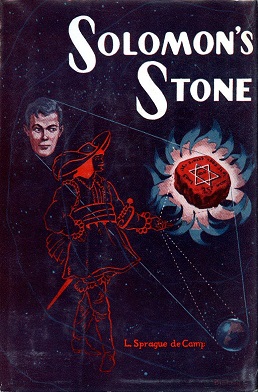 | ||
| Jean Wells' illustration of the Eye of the Deep from the original Monster Manual |
It's been reported that Jean Wells, former TSR employee best remembered for authoring the module B3 Palace of the Silver Princess, has passed away at age 56. The Society of Torch, Pole and Rope has information from her former TSR co-worker Steve Sullivan, who provided art for B3.
Her other work for TSR is often overlooked in the attention given to the events surrounding the recall of the original orange-covered B3 and republication with a green-cover (revised by Tom Moldvay). However, in addition to writing B3, Jean was also the original Sage for the Sage Advice column in Dragon magazine, and contributed art to several TSR products such as the fourth revision (Aug 1979) of the original Monster Manual, where she provided the Eye of the Deep (see above), Giant (Sumatran) Rat, Otyugh (with "Dave"), and probably Violet Fungi (the signature is illegible). These were the last illustrations added to the original Monster Manual. The Eye of the Deep was always a favorite of mine.
In the original orange-covered B3, she drew the area map on page 5 (signed Jean Wells), and the half-page illustration of Travis on page 15 is signed "JW, SS" (presumably Jean Wells, Steve Sullivan). Some other pictures are unsigned (possibly cropped) and could be hers as well.
 |
| Jean Wells' area map from the original orange-covered B3 Palace of the Silver Princess (1981) module |
Monster Manual (1979) - Interior Art for Aug 1979 revision
S2 White Plume Mountain (1979) - Editor
Lost Tamaochan (1979) - Interior Art and other help
Lost Tamaochan (1979) - Interior Art and other help
Rogues Gallery (1980) - Design (Co-Author), Editing, Layout; includes her character Ceatitle
B2 Keep on the Borderlands (1980) - Editor
B3 Palace of the Silver Princess (1981) - Author and Interior Art
A4 In the Dungeons of the Slave Lords (1981) - Interior Art
Polyhedron #3 (Winter 1981) - Interior Art ("Plant Creature" = Jupiter Blood Sucker from B3)
Polyhedron #4 (Jan 1982) - Interior Art (illustration of Duchess and Candella)
Sage Advice column in Dragon (years?)
This is undoubtedly incomplete, so let me know if you know of anything else.
 | ||||||||
| Jean Wells' illustration of her characters Duchess and Candella who appear in B3, from Polyhedron #4 (1982). |















